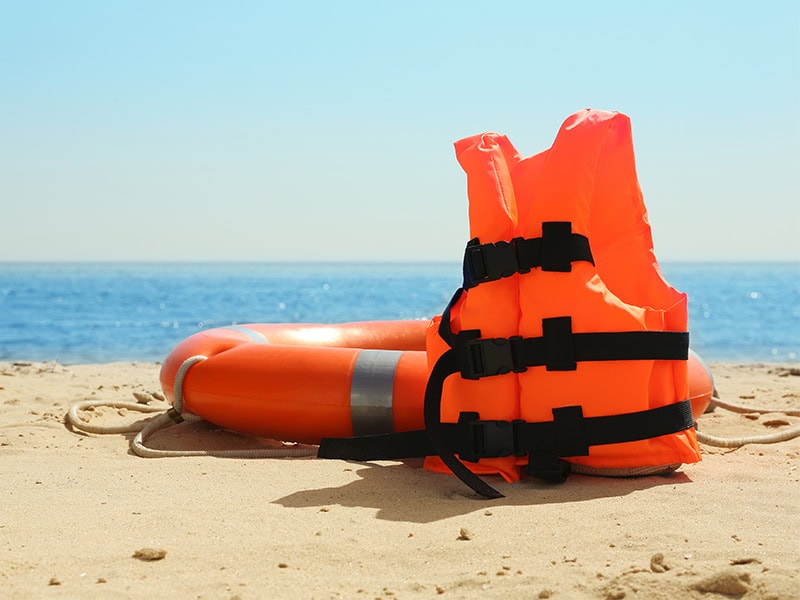1 | What Is a Life Jacket (or Life Vest)?
A personal flotation device (PFD) is any wearable or throwable gear designed to keep you afloat. “Life jacket” and “life vest” usually describe wearable PFDs that meet U.S. Coast Guard (USCG) or ISO 12402 buoyancy requirements. The Coast Guard still recognises legacy Type I–V labels, though a new “Performance-Level” system is phasing in from 2025 onward
2 | Key Buying Factors
| Factor | Why it matters | Quick check |
|---|---|---|
| Certification | USCG mark is mandatory on U.S. waters; ISO 12402 signals global compliance SECUMAR | Look for an approval stamp inside the jacket |
| Buoyancy (N or lb) | Heavier seas & gear = more lift | Offshore crews need ≥22 lb (100 N) |
| Fit & Comfort | Poor fit means riders won’t wear it | Snug at chest; no ride-up when arms lifted |
| Activity Design | Kayak backs, fishing pockets, SUP belt packs | Match the label (“kayak”, “sailing”, etc.) |
| Extras | Reflective tape, crotch strap, whistle | Boosts visibility and survival odds |
3 | Life-Jacket Types Explained
| Type | Use Case | Pros | Cons |
|---|---|---|---|
| Type I – Offshore | Blue-water, commercial | Highest buoyancy, turns unconscious face-up | Bulky, expensive |
| Type II – Near-shore | Inland cruising | Cheaper, lighter | Limited turn-over force |
| Type III – Recreational “life vest” | Kayaking, SUP, fishing | Freedom of movement | Won’t right an unconscious wearer |
| Type IV – Throwable | Ring or cushion for man-overboard | Backup device | Not a wearable; one hand must hold on |
| Type V – Specialised / Inflatable | Belt packs, sailing harnesses | Slimmest, coolest | Legal only when worn & armed |
4 | The 7 Best Life Jackets of 2025
| # | Model & Link | Best For | Notable Specs / Features |
|---|---|---|---|
| 1 | Mustang Survival Atlas 190 DLX Pro | Offshore / Commercial | 190 N buoyancy, auto-inflation, ISO/USCG harmonised approval |
| 2 | NRS Chinook OS | Kayak Fishing | 16.5 lb lift, 7 gear pockets, high-back mesh |
| 3 | Onyx M-16 Belt Pack | SUP / Warm-weather | Manual inflatable belt, 17 lb when inflated, 1-lb pack weight |
| 4 | Astral Otter 2.0 Youth | Kids (30–90 lb) | Short torso, PVC-free foam, 11 lb lift |
| 5 | Stohlquist Fit Universal | Budget Group Buy | Type III, four-pack under $140, 16 lb lift |
| 6 | Mustang Khimera Hybrid | All-Purpose / Sailing | Foam + CO₂ hybrid, 20 lb total lift, slim cut |
| 7 | Flowt Type I Commercial | Charter Boats | 22 lb lift, reflective SOLAS tape, $79 ea |
5 | Frequently Asked Questions
What size life vest should I buy?
Measure chest at the widest point and follow the maker’s chart; a correct fit will not ride up when you lift your arms.
Are inflatable life jackets safe?
Yes — when armed, worn, and USCG-approved. They’re illegal for high-impact sports or for chi0ldren under 16.
Life jacket vs. life vest: is there a difference?
“Life vest” is a casual term for a Type III PFD; “life jacket” historically refers to Type I–II, but the words overlap in retail listings

How long do PFDs last?
Foam jackets: 10 years with proper care; inflatables: 5–10 years, cylinder replaced annually or after use
6 | Care & Storage Tips
Rinse with fresh water, dry away from direct heat, and store in a ventilated locker. Replace any jacket that shows crushed foam, mildew, or torn straps.
7 | Conclusion & Next Steps
Picking the best life jacket comes down to matching certification, buoyancy, and comfort to your activity. Check your local laws, try the vest on for fit, and then hit the water with confidence.
Ready to gear up?
Shop JIEKANG’s 2025 Life-Jacket Line
Need help measuring? Contact our safety team for a free fitting guide.
Stay safe, stay afloat, and enjoy every adventure on the water!



